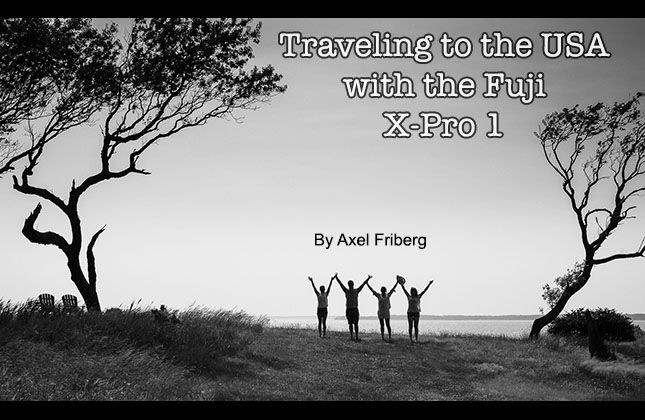
Traveling to the USA with a Fuji X-Pro 1
by Axel Friberg
Dear Steve,
I hoped you enjoyed your stay in Ireland! Dublin is one of my personal favorites.
I am a Swedish photographer based in Uppsala, north of Stockholm. This summer I have been lucky enough to travel for 5 weeks to the US, France and the west coast of Sweden thanks to hospitable friends. I would like to share my pictures with you and your readers. They are all taken with the Fuji X-Pro1 and 35mm f/1.4.
Picture 1. Nantucket Island, USA. Street shooting. Man with yellow phone and matching car
Picture 2. North Haven, Long Island, USA. Walking up towards an empty plot of land with beautiful trees.
Picture 3. North Haven, Long Island, USA. On the empty plot of land.
Picture 4. Tribecca, New York, USA. Street shooting the police who stopped in front of me to yell at a biker.
Picture 5. Central Park, New York, USA. Street shooting very talented musicians.
Picture 6. Grand Central Terminal, New York, USA. Shooting the crowd passing by. Notice the woman in white?
Picture 7. Nordkoster, Sweden. Girls on swings.
Picture 8. Fayence, France. Street shooting in the village after thunderstorm. Reflections in water, upside-down.
Picture 9. Fayence, France. Street shooting in the village after thunderstorm.
Picture 10. Uppsala, Sweden. Shooting an event on a Fraternity/Sorority which houses in a beautiful building from the 17:th century.
I recently read your thoughts on the new Fujifilm X-A1 and your take on the X-trans sensor, or the lack thereof. After shooting with the X-Pro1 for little over a year, I dare say I have some experience with the sensor. And I agree with you! In fact, I dislike the way my OOC files turn out. It is not uncommon that the pictures look kind of smeared. Especially soft objects, like leaves or skin, despite being in perfect focus. However, I have always found it to work well as a monochrome camera. I am huge B&W fan.
For a long time, I did some “pixel peeping”, or at least kind of; 100% zoom to check that I nailed focus etc. I’m not a rich guy, and when I put over 2’000 USD last year on the camera and lens, knowingly sacrificing AF-speed for IQ, I was kind of expecting greatness. At first, I felt a tad disappointed. Now, a year later, I have stopped the intense pixel peeping and focus on the final image.
What I have learned is that despite the Fuji X-cameras takes a dull OOC picture, one can achieve great results with some post processing. Just like the Leica MM OOC files. Since the camera does a fine job handling mid-high ISO, you can give your images a pretty damn impressive DR in PP, when lifting shadows for example. (However, I would personally set the ISO to a maximum of 3200 in a dark room. It can handle 6400 without a problem in perfect light, but I often shoot in a non-controlled environment.) I really like what you can do with the files in PP! The files can get that deep, rich look; see the picture of the cops? Hugely improved with 15 second PP! The Fuji is not as good as a full frame camera, like the Leica M typ 240, of course, but it gives you good value in terms of IQ! Another problem I used to have with the X-Pro1, which I know you have mentioned on the blog, is that it does not handle well in full sun. With some minor PP, I have been able to get rid of this problem. (I use Lightroom 5).
Since the release of the Olympus OM-D EM-1 however, I have been thinking of switching systems. I might get the mark 2 version in the future. The only thing that would make me want to keep investing in Fuji glass instead of selling would be if Fuji released an IC with in-body IS, like the Olympus OMD, or the Panasonic GX-7, AF-speed even faster than the X100S and an EVF on-pair with the EM-1. I feel that I miss too many shots right now. However, I appreciate the fact that Fuji often try to improve the current line up with firmware updates. When we finally got focus peaking, MF went much faster and easier than before.
Another camera that will probably peak my interest is the upcoming Canon 7D mk ii. I have seen great portraits with Canons APS-C sensor cameras paired with the 85mm f/1.8 (about 135mm equivalent). Furthermore, it’s bound to be a fantastic camera for bird photography. For portability, which is why I got the X-Pro1, I’d switch to the Ricoh GR. I used to prefer 50mm to any other focal length, but lately I have been studying William Klein and fallen in love with the 24-35mm range.
Keep up the good work!

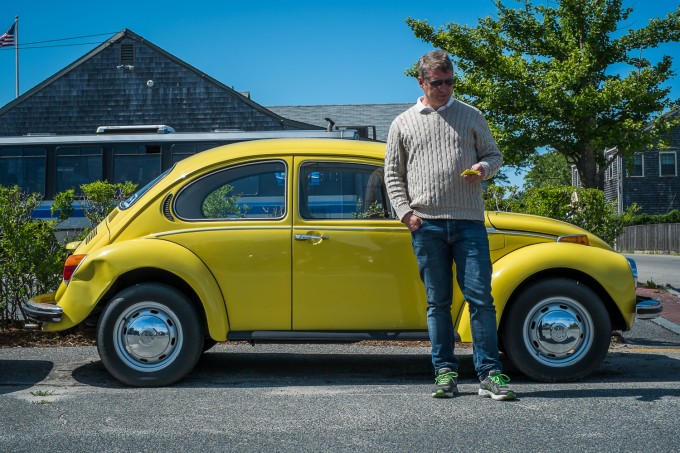
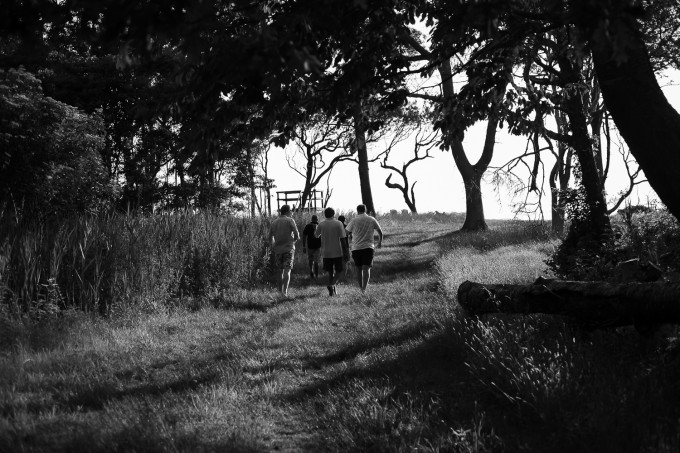
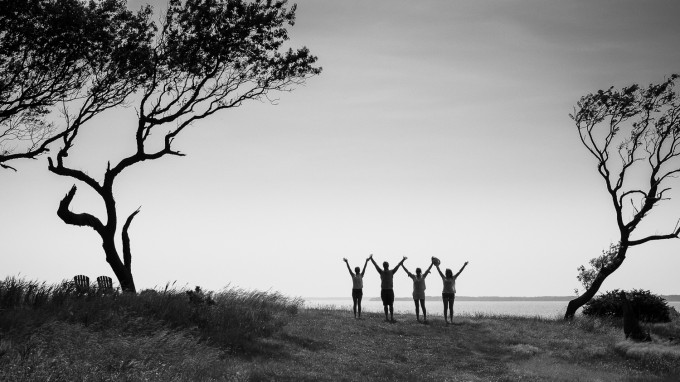
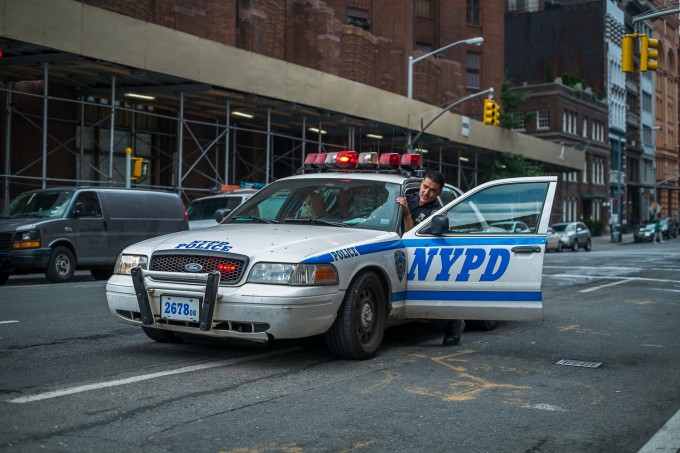

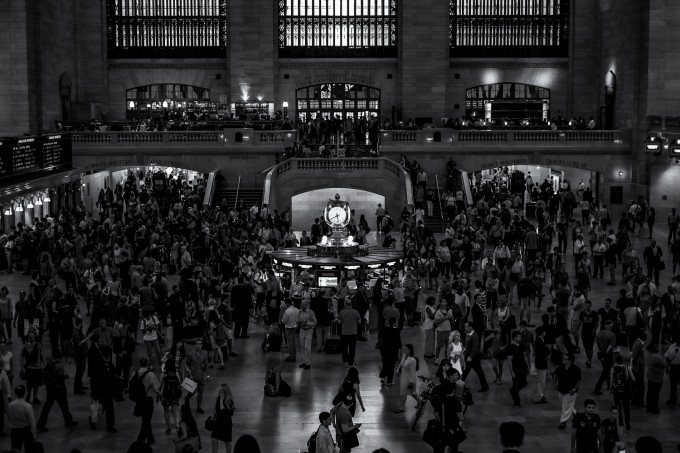
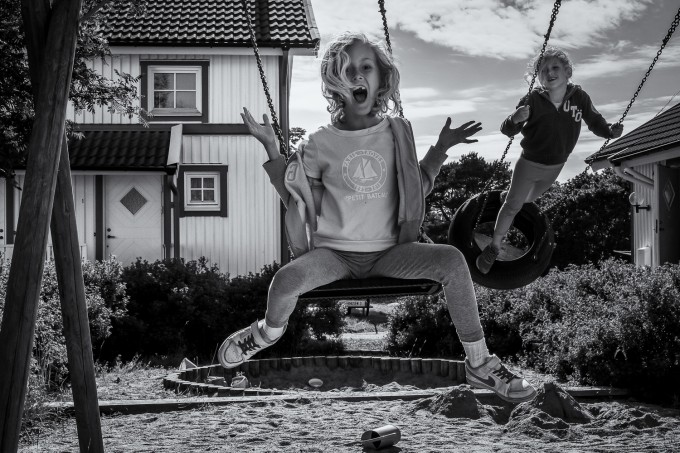
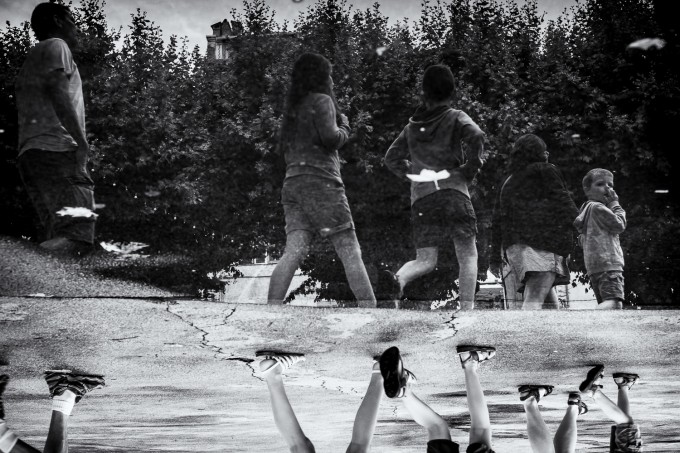
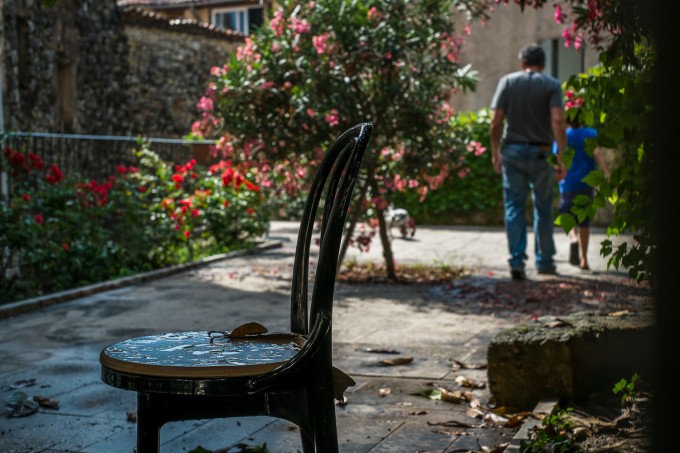
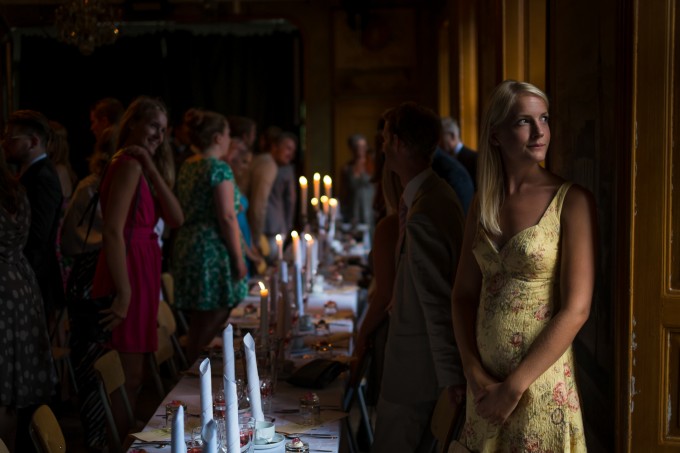



Dear Axel, thank you for the review and sharing of the nice pictures. The X-Pro 1 has the best IQ in combination with size and weight (the X-E2 is a little too small for my hands) if one is willing to do some post processing as you say. You are right, the OOC RAW files that the camera produces at first look like nothing to write home about but they are sharp, have hardly any noise even at high ISO, with excellent colors and white balance. This means one can get fantastically looking images from the processed RAW files. Not all RAW converters are the same. I found the Capture One does an incredible job with most of the Fuji RAW files. I also own LR but it’s not that good with the Fuji RAWs. For close-up portraits ACDSee produces the best results with skin tones and skin colors, much better than Capture One, I think. But most of the time I use Capture One. It has an auto correction function which can be applied to all imported RAW files simultaneously and then one needs to tweak each image just a little in terms of exposure and shadows, etc., for example. Sometimes I crank up the color just because some images then look amazing. That’s it for me. I have some dull looking RAWs that I took when I first got this camera and my reaction was the same as yours. But after processing them they blow my mind how good they are. Am willing to share in case anyone is interested. I switched from a large DSRL and I love the Fuji. With the new firmware update the autofocus is also much faster.
Very nice work, Fuji mirrorless camera was a break though. Fuji glass is world class. The X-Pro-1 is about as fast as most mirrorless. Going with a smaller sensor is what you trade with OM-D. To each his own. These systems are small and light. carrying both is not that far out of resonable.
I love the Fuji and wait for the next gen of X-Pros.
I sold my X-E1. I was not too happy with it. IQ wise it is a mixed bag for me. Dynamic Range and resolution is great and noise is no issue but colors are just not on par with the best and that is really hard to work around in pp. Easier to apply some sharpening 😉 Anyhow there are great differences from the results you get when you use different software. Especially the Raw converter within LR is not the best, even in LR5. I bought a different Raw converter for 60 bucks and imported the images later to LR. Better colors and crazy sharpness. But as i said before, there is simply something missing in these files for my eyes. Micro 4/3 would not be an option for me either although i like the colors coming from the OM-D much better. There is hardly a perfect camera out there. If you dont mind carrying lots of weight the D800E gets close. Me, I sold that one also. Way too heavy to carry it all day – at least for me.
Ah, if a Fuji is good enough for Nan Goldin………..
Greets, Ed.
No. A NYPD officer yelling at someone?
Don’t buy it.
Those are lovely images. My favorite is the girls on swings. There’s a very nice quality about the way that picture is rendered.
also, I use an EM5 and used to limit my shooting almost exclusively to ISO 1600 at the max. I would rather drop my shutter to a ridiculous number like 1/5 handhold than have the noise from ISO 3200. But lately I have come to accept that as noisy as iso3200 & 6400 are, what matters most is to capture the moment. Once I got past that mental hurdle I have now been very happy shooting even 6400 when light can’t accomodate any lower ISO; particularly if I process in B&W it still looks fantastic.
Lovely pics
I loved them all especially the two girls on swings which is a beautiful catch. It also shows the AF to be quite good.
I too am a great B\W fan and yet your last pic is truely nice with very nice color tones.
I’d love to see more
I believe I used manual focus and f/11 on the photo with the girls on swings. Thank you! I was very happy with the last pic!
I am also an XP1 owner who has given serious consideration to the EM-1. The image quality from the XP1 blows me away time and time again. Considering I shoot mostly static objects and landscapes the AF has not been too much of and issue. But, what I am looking at is the fact that EM-1 has complete weather sealing and is fairly shock resistant. That is what keeps me looking at changing systems. But, my biggest fear is I would take a hit IQ wise. My primary cameras are Full Frame and MF digital, so I would still have IQ when I need it.
My question is the hit in IQ worth the upgrade in other areas? For example is the IS good enough to compensate for lack of quality at higher ISOs that the XP1 excels. Hard to make a decision, I am in now rush but I keep looking at the options
From what I have seen, the newer MFT cameras handles ISO pretty well; theres probably only a 2/3 stop difference when it comes to noise between the X-Pro1 and the EM-1. And like I wrote, I wouldn’t use ISO over 3200 on the X-Pro1 in a dark room (when the higher ISO is really needed).
I think these shots are every bit as good as the ones I have taken with my leica m 240!!! What lens did you use?
Thank you Bob, that’s very kind.
All pictures were taken with the Fujinon 35mm f/1.4
Nice shots!! These are the kind of images that remind me just how capable the Fuji system is.
Fuji has been working on their AF. The X100s is a big improvement over the older XE1/XPRO1 from what I can tell. I would imagine the next round of bodies XE2/XP2 will also see a big improvement with PDAF/CDAF being implemented. Additionally, their lenses are arguably some of the best of the mirrorless systems. Hope you are able to find and continue using what works for you!
FUJIFILM IS THE NEW LEICA . amazing pictures
Hi I love my X-pro1, only had it a few months….. took some photos at a Caro Emerald concert… loved the results. easier to take in than a DSLR.
Agree with Col. I’m amazed at how much photographers, amateurs and claimed-to-be pros, who mostly do pixel-peeping instead of learning to master his crafts. “A camera is just a tool, but it’s you who creates a picture”.
As being a long-time full-frame DSLR user, I’m starting to look at Fuji X-system as a long term alternative due to its high IQ and large sensor (APS-C). I have also looked at the MFT system like Olympus & Panasonic but its small sensor, 50% smaller, is the major reason why I will not. I suggest ones should look at this “MFT versus APS-C” link below for the in-depth analysis before wasting the $.
http://diglloyd.com/blog/2013/20130724_4-MFT-summary.html
Also, you should look at reviews and real-life images shot by top pros like David Hobby, Zack Arias, Bert Stephani, etc, to see what these Fuji could offer. Google and see how many Fuji v/s Olympus review blogs .
The photographers above all take gorgeous pictures with the Fuji, and are real ambassadors for the system. I visit their blogs regularly to convince me that I made the right choice when moving from M4/3 to the fuji X system and investing in two bodies and primes.
However, as a “tool”, the Fuji has (in my case too) many imperfections, that stand in-between me and the pictures I want to take, AF being the main. I have been taking picture for over 20 years (starting with a manual film DSLR), but this is the most unreliable, frustrating system I have ever owned, and the first camera actually to break down after less than a year.
Looking at the increasing price of the new Fuji primes (the 18 & 35 1.4 mm were launched around 520€, and once people bought into the system, Fuji now issues primes of 900+€), poor built quality of the cameras, absence of IS and lack of dust+weather sealing, as well as the size problem that makes a Xpro with 23mm lens not really smaller than a APS-C Nikon 7100 with similar lens, I am wondering if the Fuji IQ really weights in the balance (opposed to an APS DSLR with primes, as usually people compare “light, compact mirror less with prime // bulky ugly DSLR with heavy, poor zoom”).
I wanted the Fuji to be my carry around camera in a way that my Olympus Pen was, but with better IQ. The point is that it is as bulky as a APS-C DSLR would be, but without the robustness of a similar priced DSLR or the reliability & really small size of an Olympus with primes).
Lloyd Chambers is one of the best analysts in this business. Though he likes M4/3, he makes a compelling case for why it cannot compete with APS-C in terms of IQ quality, usability, or market momentum as we go forward.
For those who don’t want to click on the above link, or read all of it, here are the most salient points of his argument >>
“…APS-C cameras have become a juggernaut of interesting designs hitting a sweet spot in so many ways (cost, size, R&D backing, etc), and I expect Sony and Ricoh and Fujifilm and Sigma and Nikon and Canon and others to up their game. How can Olympus and Panasonic weather that with M4/3?”
“APS-C camp: Sony, Nikon, Canon, Fujifilm, Ricoh/Pentax, Sigma, Leica, Samsung, Zeiss. M4/3 camp: Olympus and Panasonic. On R&D dollar terms alone, what does that mean? Why is there no new M4/3 player since the beginning?”
“M4/3 offers very good and “good enough” quality and it will get better, but it has an inherent quality handicap versus the 65% larger APS-C sensor. Yet APS-C not only nips at its heels, but goes smaller and lighter already. Momentum is lacking in M4/3 and in this market, R&D costs become an increasing issue.”
“In reality, it is possible to build an APS-C kit as small and light as M4/3 if one does not insist on interchangeable lenses. This trend will extend itself more and more, and also to full-frame. When one considers the redundancy and battery/accessory sharing of fixed lens compacts (versus dual M4/3 bodies), the advantage actually accrues to APS-C…”
Much as I love what Olympus has done with the OMD E-M1, I firmly believe one is investing in a format that is going to die out.
I will go on record and disagree with Mr. Chambers. 🙂 The Micro 4/3 format offers MANY things over APS-C, and anyone who has seriously used both will know this. For one, speed and usability. The E-M1, E-M5 and GX7 and E-P5 are MUCH better in the usability departtment than ANY Fuji X body, or NEX body. The Micro 4/3 cameras have the fastest AF, best features, best build, best lenses, and IQ that equals the APS-C counterparts when you print up to 20X30 or look at resized images. Pixel Peepers? Thats a different story but that also has nothing to do with Photography.
An E-M1 or E-P5 or GX7 with a 25 1.4 or 42 0.95 gives me much more joy in shooting, owning and results than any APS-C I have used to date.
They just work, and they have a charm that others have not yet matched. The lenses are MUCH smaller than APS-C, the primes are TOP quality and focus silently without issues and the other features such as the 5-Axis IS and weather sealing on the E-M1 and E-M5 are things the others do not offer.
I have shot them all..NEX. Fuji X, Samsung NX, Ricoh, and others. For mirrorless, I always come back to Micro 4/3 eventually as it is the only one I ever miss forthe very reasons I just stated. The E-M1 and GX7 are the #1 selling cameras on Amazon right now. There is a reason for that.
With that said, Micro 4/3 cannot come close to Full Frame cameras like the D800, Leica M, RX1..in IQ yet they still beat them in size, price, and are not that far off when using the right lenses. A cameras capabilities is not about high ISO – as 3% of us shoot past 3200 at night.
A camera has to have it all – and the Micro 4/3 offerings, well, 3-4 of them..do.
Fuji X lacks in many areas, NEX still has some issues, Samsung is really not in the game at this time for various reasons, Sigma DP..too limited.
For those who want a HQ well made and easy to use camera, M 4/3 is rocking it. Grab an E-P5 or E-M1 or GX7 with a 12, 20, 45 and 75 set of primes and the things you can capture are only limited by the photographer.
I still adore full frame quality but as a 2nd system, Micro 4/3 is the best bet for me.
Man there is NO WAY m4/3 can compete with a inherently larger APS-C sized sensor. You’ll have to show me that one and I’m NOT from Missouri
Did you not read what I wrote? If not, I suggest reading it. If so, read again 🙂 BTW, I have seen many images form Micro 4/3 that wiped the floor with some APS-C shots and vice versa, its all who uses it. Ive seen pro work with the E-M5 that was some of the best work I have ever seen. So yes, it easily competes with IQ (unless you are in the 3% who shoot at ISO 6400 at night, or are in the group of 100% screen view pixel peepers, which is not even related to photography).
So using the right lenses, and with the right person, Micro 4.3 can compete with APS-C for IQ. Ive seen it, and I have seen in many times. Where Micro 4/3 wipes the floor with APS-C cameras is what I wrote above in detail.
Its not all about pixel peeping, its about photography and using a capable tool that works.
BTW, what does being from Missouri have to do with anything?
Hey Steve, I don’t buy the “best selling” camera argument (Windows still outsell Macs despite being worse than awful) but I would love to check out the works of some folks who use 4/3s that you referenced. Do you happen to have a link? Wouldn’t mind including a 4/3 cam in my bag.
Cheers!
Well, I’m just going to preface this right away by saying that I’m a big Olympus fan. I have a E-P5 and two “old” OM-2n bodies.
And from what I gather, Lloyd Chambers actually likes APS-C, for many of the same reasons as you, Steve.
And I don’t discount all the advantages you mention when it comes to the other technologies apart from IQ: size, weight, autofocus speed, 5-axis image stabilization; actually these are the major advantages that have kept Olympus/Panasonic in the game for this long.
I think what Lloyd is arguing is that with APS-C cameras getting smaller (in several cases the Fuji X lenses aren’t any bigger than many of the M4/3 lenses) and full-frame showing up in compact cameras (a la Sony RX1) the trend is moving to bigger sensors in smaller bodies, rather than other way ’round >>
“The M4/3 sensor is only 60% of the size of APS-C, yet cameras like the Olympus OM-D E-M5 suffer from noise at embarrassingly low ISO values and the Olympus E-M5 is actually a lot larger than entrants like the Coolpix A … Micro Four Thirds cannot touch these APS-C cameras in terms of image quality, certainly not the sensational noise and color rendition of the Nikon Coolpix A…”
The Coolpix A proves that you don’t have to place a large DSLR sized lens in front of the APS-C sensor … even with autofocus. Only the objective/exit has to be large enough.
This trend calls the viability of the M4/3 format’s future into question: why continue with a smaller sensor when APS-C can be placed in smaller form factors? With the industry’s heavy hitters behind APS-C and full frame (Nikon, Canon, Sony, etc.) where do Olympus/Panasonic go from here?
Zeiss, for example, while committing to Sony NEX and Fuji X with a new line of lenses that cater to both, flatly refuse to enter the M4/3 market.
Will there be room left in the market for M4/3 to grow any further? I guess the OM-D E-M1 is Olympus’ answer to that question … for now.
Segueing slightly, yes, the X-Pro 1 suffers from a painfully inconsistent autofocusing system (even with all the firmware updates), but it’s autofocus is still faster than a Leica M. 😉 Aside from that, it’s really my only significant gripe with the camera. I expect the XP2 will be a bit of a game-changer in the APS-C/mirrorless marketplace. A few upgrades I anticipate:
– 24 megapixel X-Trans APS-C sensor (challenging the excellent Toshiba sensor in Nikon’s D7100).
– an autofocus system that improves on the latest one introduced in the X100s
– much more powerful processor
– weather resistance
– significantly improved EVF and refresh rate
– bigger buffer
– ability to set minimum shutter speed in auto ISO mode
I don’t personally think Fuji will introduce image stabilization into an XP2 body; I don’t think it’s part of their philosophy with that camera. I hope I’m wrong because it would give the XP2 some serious juice in the industry.
As to lens quality, I put the Fuji lenses up against anyone. People forget that Fuji helped design and build the Hasselblad X-Pan along with the Hasselblad H series cameras and lenses. And in broadcast television, their lenses have an unsurpassed reputation. The XF 35mm f/1.4R and the XF 14mm f/2.8R are optical gems, imo. I would go so far as to say they’re two of the best lenses ever to come out of Japan.
But again, as you say, Steve, most of today’s higher-end cameras are capable of producing stellar results under a broad range of conditions … in the right hands. The hammer doesn’t build the house, after all. 😉
The X Pro 1 is a gem and I have been more than happy with it. I was also thinking of switching to the EM-1. I did use an EM-5 for some time and returned it because it did not suit my style. It looks like High ISO noise in OM-D has not improved by a fathom and that is what is pulling me back from investing into the system. Almost 90% of my pictures are in the dark.
Why not wait until the X Pro 2 is released? Maybe it will offer the PDAF/CDAF hybrid as rumored? The X series lenses have only been growing steadily and now we have quite a few good options other than the original trio.
There is no doubt in my mind that the successors of the X-Pro1 and X-E1 will have the hybrid PDAF/CDAF like the X100s. The EVFs will surely be pretty good. X-Pro2 launch first (probably around April 2014) with the same hybrid VF as the X100s and then the X-E2 with a 2.83 million dot EVF only (around September). I am just hoping that the new X-bodies will have built in IS, like the OM-D, which I find to be an incredibly useful feature to have. Otherwise, we have to wait at least two more years for the X-Pro3 and the X-E3. By then, the upcoming compact Sony full frame, interchangeable lens camera with IS will have dominated the market for at least 2 years!
Fuji, please understand that built-in Image Stabilization in the camera body is something we photographers appreciate a great deal, despite the fact that most of us Fuji owners solely shoot with fast aperture primes! I’d love to be able to use 1/30 of a sec handheld with the upcoming 56mm f/1.2, without any visible camera shake, instead of 1/125 of a sec!
I would definitely wait for the XP2. If you’ve already go a lens(es) then you’ll just need to update your body.
The XP2 will have a further evolved version of the PDAF/CDAF currently found in the X100s, plus much, much more…
I don’t think you’ll see in-body image stabilization, however. No info one way or the other on this, just don’t think Fuji will do it.
As to “faults” with the X-Trans sensor, I’ve never experienced this. Have a look at the results David Kai Piper, Damian Lovegrove, Zack Arias and David Hobby are getting.
Sorry, I meant picture 3 for graphics.
I really enjoyed seeing what you do with 35mm. I keep wondering about that focal length, and your examples are lovely. The first picture is graphically superb. It was nice to have a couple of glimpses of Fayence again (tho’ I like Seillans even more!!). And that full-length portrait in surroundings from Uppsala is very special. I sympathise with your dilemma about investing more in Fuji glass or going over to EM-1: i have the same problem in relation to NEX.
Thank you John!
When it comes to AF, Fuji seem to be no match for the faster Sony, but I dislike the NEX menu system quite a lot. As for Fayence vs. Seillance, I guess we have to agree to disagree 😉
Keep in mind that it’s a crop sensor, so the 35mm lens on the Fuji is actually equivalent to a 50mm focal length, so the images are not as wide.
Nice shots by the way Axel!
Thanks Luke!
Always interesting to hear photographers’ thoughts on equipment in actual use, it’s often not the “best” camera on paper that suits you…sometimes it’s just how it feels in your hand and up to your eye.
Who’s the “woman in white”…wife, girlfriend ?
She’s simply a random beautiful woman who stood out from the rest of the crowd and made the image more interesting
You’ve spent a year learning to master the X-Pro1 and from the look of these lovely, gentle photographs (the last one in particular) you’ve learnt a lot. Why spend time worrying about which new system to switch to when you could be out taking more photos like these? Is your gear really holding you back? I don’t see anything here to suggest that it is. The only people who will benefit from you switching systems are the camera companies.
Thank you Col!
These are the best photos from the summer. The IQ is very high which I love about the Fuji, but the AF is a bit inaccurate. This has been improved some with the firmware updates. However, there are many missed shots from the summer which, naturally, I did not send to Steve.
Fantastisk flotte bilder, Axel. Har vært på Koster mange ganger og drukket mye iskald Spendrups. Kult å se bilder derfra, det fikk meg faktisk til å lengte litt etter Skandinavia.
Tack! =)